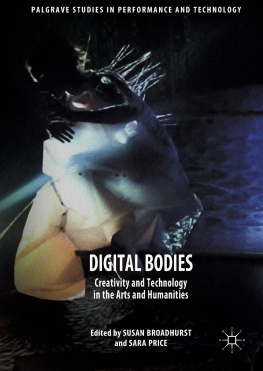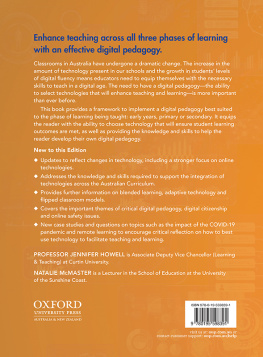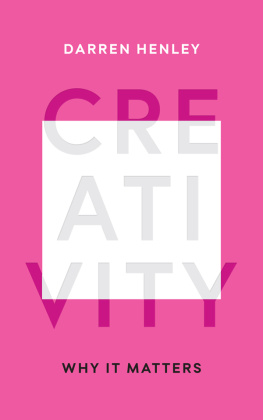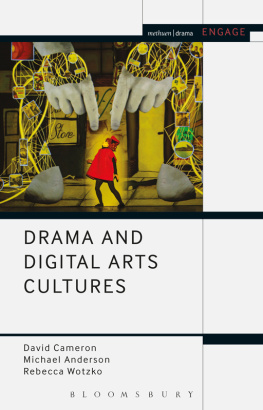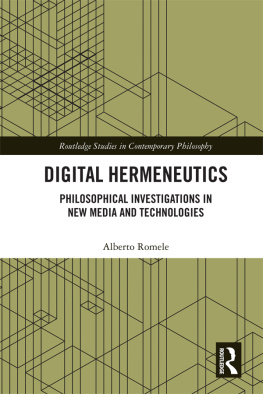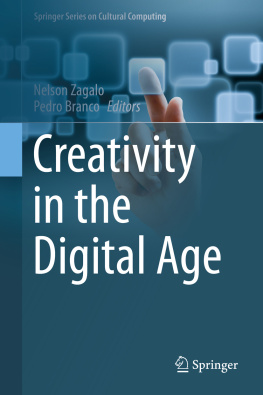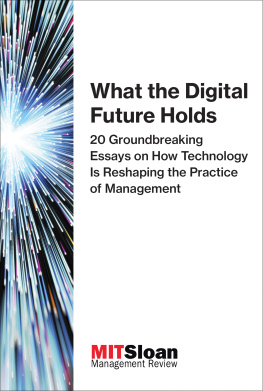1. Introduction
Digital Bodies : Creativity and Technology in the Arts and Humanities foregrounds creativity, whilst interrogating the use of technologies and the notion of embodiment within the various disciplines of Art, Design , Performance and the Social Sciences . In so doing it explores a potential and even virtual new sense of embodied self. Technical experimentation creates challenges to human creativity , not least of which is a fundamental questioning of the formers usefulness in enhancing the latter. However, from such processes new aesthetic approaches and strategies may develop. As a result of technological inclusions in the creative process , our perception of reality might well undergo a reconfiguration, in effect recreating our experience in the world.
In offering engagement, from a multi-disciplinary perspective, with digital technologies related to bodily interaction and creativity, this collection aims to illustrate the synergies and differences in the theorisation of the body and technology , and how these in turn shape new or evolving research practices across the arts and humanities. By taking a multi-disciplinary approach a comprehensive view of digital technology research is offered that both extends our notions of the body and creativity through a digital lens, and informs of the role of technology in research and practices central to the Arts and Humanities.
Drawing on our collaborative ESRC funded project: Methodological Innovation in Digital Arts and Social Sciences ( MIDAS) , which examined a diverse range of methodological approaches to digital creativity, various synergies have arisen, particularly in the way that the body and technology is theorised. The project brought together expertise from various disciplines across the Arts and Humanities, from the UCL Institute of Education (IOE), the Contemporary and Digital Performance Studio, Brunel University, the Digital Fashion Studio, London College of Fashion and Information Experience Design , Royal College of Art. Since the project had its inception in MIDAS, rather than purely methodological approaches, the collaborators are more concerned with creativity , the interrogation of technologies and the notion of embodiment within our various disciplines.
Contextually, it can be posited that the exponential growth of digital technology has affected the way we think, reflect on ourselves, interact with the world, and create. In the technology industries creativity has become a familiar portmanteau term for ideas that spawn commercially successful products, but has this any bearing on how the term is used in the Arts and Humanities in the context of digital technologies? In this collection we aim to find some answers to this question through the analysis of various case histories within the disciplines of design, fashion, performance and social science which set out to scrutinise, in their diverse ways, the process of creation itself, and how an artists, creators or researchers intent negotiates the technological/physical means to produce them.
Central to the virtual/physical interface demonstrated in the genres discussed is an emphasis on the tactile, sensual and even playful nature of the body . The digital body is extended, enhanced, reconfigured and yet identifiable as a body of infinite variability and creativity , that is still linked with our everyday mode of being tied to our locatable and temporal existence. In particular, Digital Bodies offers an interrogation of diverse creative art works that are indebted to somatic approaches to creativity in all manner of ways, together with works that engage in creative uses of technology to support progressive understanding of digital bodily interaction in social science contexts. At the same time it looks to new approaches offered by practices in physical, visual and virtual creative works that incorporate both new and existing technologies.
There is also the phenomenon of what the direct use of physical instrumentation does to our innate sense of being embodied (sometimes called proprioception). When we build such instruments we consequently project around ourselves a mediated world, in effect our somatic limits spread to include our created tools . This phenomenon was noted by Heidegger and Merleau-Ponty. Rather, than being separate from the body , technology becomes part of that body and alters and recreates our experience in the world. In many contemporary digital artworks, the human body is shown in flux, a body where contacts are made not physically but electronically where cutting edge multimedia effects explore the inherent tensions between the physical and virtual . In social science contexts contemporary digital technology changes communicational resources and communicational space, bringing new forms of interaction and the potential for new creative spaces, and new forms of making meaning.
Together with the extent of its permeation, the vastly increased interactiveness of technology has already changed artistic genres, design processes , communication and meaning making. In arts contexts, its capacity to coordinate multi-sensory experiences is a delayed realisation of the Wagnerian notion of the Gessamtkunstwerk , the total, enveloping artwork. In social science contexts its capacity to mediate interaction differently through interfaces that augment sensory engagement (visual, tactile) has given rise to new forms of communication that reshape practices in learning, performance and professional contexts. Understanding how the digital reshapes the resources and possibilities of interaction in these contexts is critical in understanding how they reconfigure ways of knowing, ways of communicating and ways of doing to inform educational practices and technology design.
Our first section, entitled The Performing Body : Creativity and Technology in Performance begins with Susan Broadhursts investigation of the notions of bodily presence and digital creativity in digital performance . Whilst highlighting the role of technologically assisted creativity she argues that many contemporary performances by means of their creative engagement can be seen as contemporary manifestations of the aforementioned Gesamtkunstwerke , equally in its Wagnerian connotation and in Antonin Artauds concept of Total Theatre . Both provide their audiences with, in varying ways, multi-sensory and multi-layered experiences. Johannes Birringer examines the question of designing wearables for use in performative or proactive environments which themselves are conceived as formative. Following his recent DAP-Lab productions, he investigates how wearables both interconnect with and extend into the atmospheres or unstable states of performative environments that create various possibilities of engagement. Birringer argues that his research productions will potentially go far beyond theatre and are closer to Claire Bishops notion of co-productions of (social) situations.
In his chapter, Dani Ploeger proposes a practice-based methodology to investigate the materiality of electronic waste (e-waste). This is based on his art-science research project: Bodies of Planned Obsolescence: digital performance and the global politics of electronic waste , where researchers participated in e-waste recycling in a factory and on a dump site in Hong Kong and Lagos, Nigeria. Following Tim Ingolds notion of making, Ploeger argues that the practical aspect of the research process does not necessarily need to concern the production of artworks, but instead could involve shared participation in labour, which itself is based on a reflective process and, as such, has the potential of creating new research avenues for interdisciplinary researchers. Maria Chatzichristodoulou concentrates on Blast Theorys piece Karen (2015), which is a hybrid between game and drama. Karen invites participants to question how they use media. As such, the capacity to critique is consciously designed into the work, and is manifested through instances of uncomfortable interactions. Through those difficult encounters, participants are invited to reflect on and develop an enhanced awareness of their own media practices. Chatzichristodoulou argues that Blast Theorys practices seek to provoke a new media sociality with an inherent practice of resistance, where according to Matt Adams from Blast Theory, heightened awareness can produce a new social landscape.

